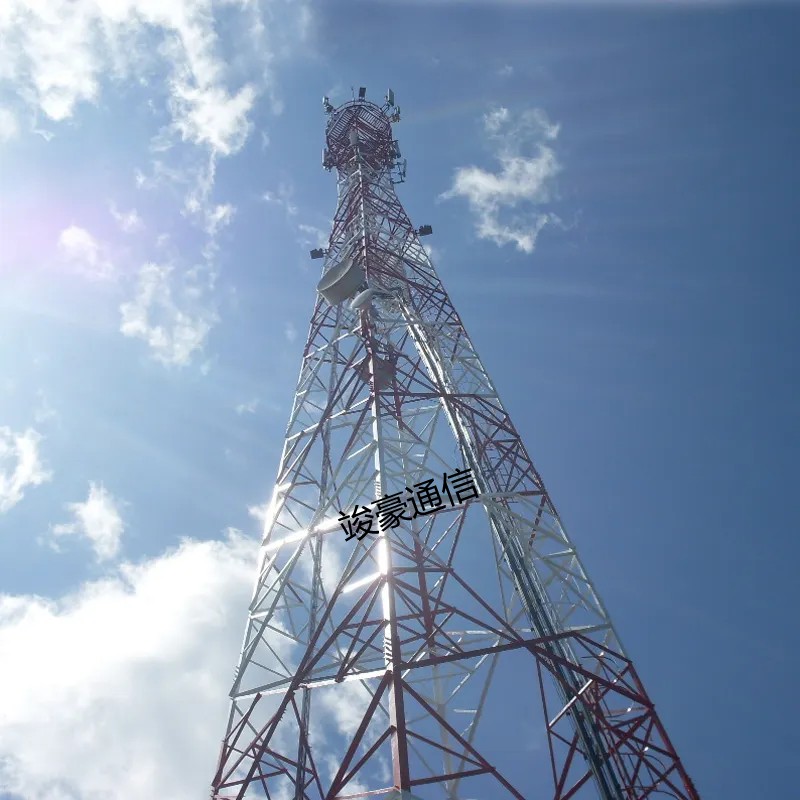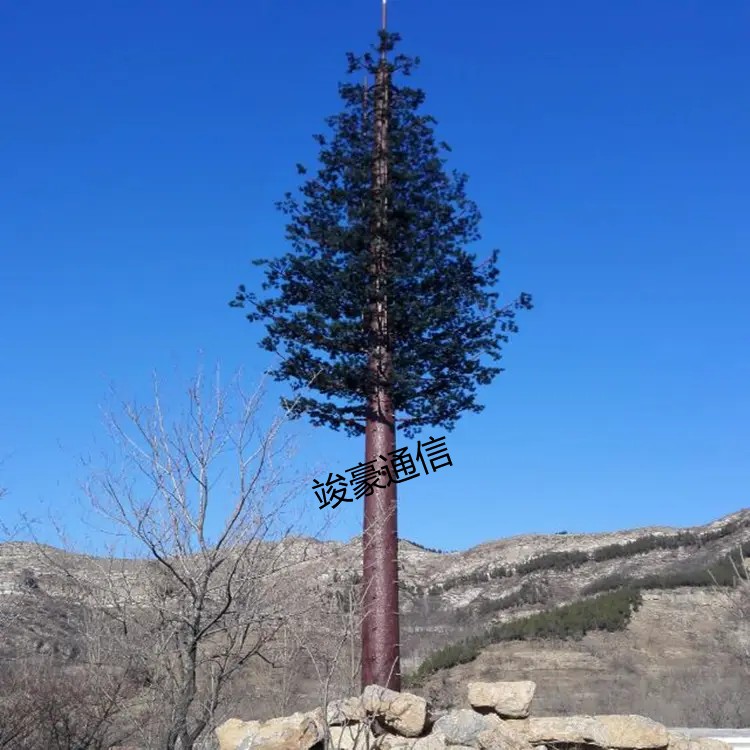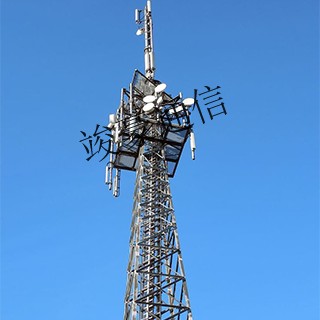Wherever there are people, there are communication towers: the invisible bridge of modern society
Communication Tower: The Watcher of the Times

On the vast and boundless land, the communication tower stands proudly like a silent yet resolute guardian, witnessing the changes of the times and the takeoff of technology. Whether it's the bustling and noisy city or the remote and peaceful countryside; Whether amidst towering mountains and vast grasslands; Whether in the depths of deserted deserts or on vast islands with clear blue waves, as long as there are traces of human activities, the tall and upright posture of communication towers can be seen everywhere.
The widespread distribution of communication towers is the most vivid and intuitive manifestation of modern technological progress. It is not just a cold steel building, but also an information bridge connecting people and the world. In the city, communication towers stand side by side with high-rise buildings, providing busy people with high-speed and stable communication services, meeting their massive demand for information in various aspects such as work, life, and entertainment. In remote areas, communication towers are like a beacon, breaking through the constraints of geographical environment and transmitting signals of modern civilization to every corner, allowing people there to enjoy the convenience and beauty of the information age and be closely connected to the world.
The diverse types and distributed intelligence of communication towers

(一)Tailored communication tower types
There are various types of communication towers, each with its unique structure and characteristics, to adapt to different geographical environments, construction needs, and cost considerations.
The angle steel tower, as the "big brother" in the communication tower family, is assembled from angle steel and connected by bolts, making processing, transportation, and installation relatively convenient. It has high overall stiffness, strong bearing capacity, and mature technological applications. It is widely used in suburban, county, township, rural and other areas with low aesthetic requirements and relatively cheap land. These places often have relatively few users, and angle steel towers, with their high tower advantages, can achieve large-scale signal coverage. However, angle steel towers are not perfect either. Their larger size and relatively lower aesthetic appeal make them somewhat out of place in areas with high environmental and landscape requirements.
Compared with angle steel towers, the tower body of a three tube tower is made of steel pipes, with three main steel pipes as the skeleton, supplemented by horizontal and diagonal steel bars for fixation. This structure makes its tower body have a triangular cross-section and a slimmer figure. The three tube tower has a simple structure, few parts, easy construction, small footprint, and relatively low cost. But its strength is relatively weak and its aesthetics are not good, so it is usually suitable for places with low landscape requirements such as suburbs, county towns, and townships, and the tower height is generally lower than that of angle steel towers.
A single tube tower is like the "tall, rich, and handsome" of an iron tower, vertically erected from a thick steel pipe. It has a simple and beautiful shape, occupies a small area, has a fast construction speed, and is very convenient for relocation and reuse. However, its cost is high, installation requirements are high, and it requires crane assistance. There are also certain difficulties in handling and production. Due to its numerous advantages, single tube towers have shown great potential in urban areas, residential communities, universities, commercial districts, scenic spots, industrial parks, railway lines, and other regions, becoming an important infrastructure for ensuring communication in these areas.
The cable tower appears relatively thin and weak, requiring surrounding cables to secure it to the ground in order to stand firm. Although it is cheap, lightweight, and easy to install, the cable occupies a large area, has poor reliability, weak load-bearing capacity, is difficult to install and maintain, has multiple components and nodes, and is difficult to relocate and reuse. Therefore, cable towers are often used in open mountainous areas and rural areas with relatively open terrain and affordable land prices.
(二)Widely distributed communication network
The distribution of communication towers is not random, but scientifically planned based on various factors such as population density and geographical environment. In cities, due to dense population and towering buildings, there is a high demand and requirement for communication signals. The distribution of communication towers is even more dense to ensure that every corner can be covered by signals. In rural and mountainous areas, the population is relatively sparse, the geographical environment is complex, and the distribution of communication towers is relatively sparse. However, suitable locations will be selected for construction based on local conditions such as the distribution of villages, topography, etc., to achieve effective signal coverage.
In order to achieve more efficient signal transmission and coverage, the distribution of communication towers usually adopts a hexagonal cellular network structure. This structure is like a honeycomb of bees, where each hexagonal "honeycomb" is a signal coverage area, and there is a communication tower in each area. Through this layout, it is possible to ensure comprehensive signal coverage while minimizing signal interference, improving the quality and efficiency of signal transmission, and enabling users to enjoy more stable and smooth communication services during their movement.
The role of communication towers in daily life

In remote areas, communication towers play an irreplaceable role. It breaks the limitations of geographical environment, allowing villagers in remote mountainous areas, travelers in deserts, and residents on islands to maintain contact with the outside world. In some remote mountains that have not yet been connected to highways, the builders of communication towers are not afraid of difficulties, using manpower to transport equipment and even using mules and horses to transport building materials, just to ensure that signals can cover these areas. The existence of communication towers not only facilitates communication between local residents and the outside world, but also provides strong support for economic development and cultural exchange in remote areas. For example, some villagers in mountainous areas have promoted local specialty agricultural products to the national market through online live streaming, achieving poverty alleviation and wealth creation; By utilizing online educational resources, students in some remote areas can simultaneously enjoy high-quality educational courses, broaden their horizons, and lay a solid foundation for future development.
In cities, communication towers are an important cornerstone of smart city construction. It combines with various intelligent devices to achieve refined management and intelligent services for the city. For example, in some cities, high-definition cameras, sensors, and other devices are installed on communication towers, transforming them into "city watchdogs" to monitor and collect real-time data on traffic flow, environmental quality, public safety, and other aspects of the city. These data are transmitted to the urban management center through the network, providing accurate basis for urban planning, traffic dispatch, environmental governance, emergency rescue, etc., greatly improving the management efficiency of the city and the quality of life of residents.
Future prospects of communication towers

With the continuous advancement and innovation of technology, communication towers will also usher in a more brilliant future. Driven by new generation communication technologies such as 5G and even future 6G, communication towers will continue to serve as the core hub for information transmission. Its technological innovation will focus on improving the speed, capacity, and stability of signal transmission to meet the growing demand for applications such as big data, cloud computing, and the Internet of Things. For example, by adopting more advanced antenna technology, signal processing algorithms, and optimizing tower structure design, signal interference can be further reduced, and signal coverage and penetration capabilities can be enhanced.
The functions of communication towers will also be further expanded. In addition to traditional communication services, it will become a multifunctional information collection and transmission platform for smart cities, integrating various sensors such as environmental monitoring, meteorological observation, and traffic flow monitoring, providing rich data support for the refined management and sustainable development of cities. In the field of agriculture, communication towers can assist in the development of smart agriculture. By carrying agricultural monitoring equipment, real-time monitoring of soil moisture, meteorological changes, crop growth status, and other information can be achieved to achieve precision agricultural production and management, and improve agricultural production efficiency and quality.
In the future, communication towers will also play an important role in responding to natural disasters, public safety incidents, and other aspects. For example, in emergency situations such as earthquakes, floods, and fires, communication towers can ensure smooth emergency communication, provide critical support for rescue command, information transmission, and seeking help from affected people, and become a strong backing for safeguarding people's lives and property safety.
It can be foreseen that communication towers, as an indispensable infrastructure in modern society, will continue to play an important role in the digital economy era, constantly promoting the progress and innovation of information and communication technology, and contributing more to the development and progress of human society. It will be like lighthouses, illuminating our path towards an intelligent, convenient, and beautiful future, allowing people from all corners of the world to share the benefits and opportunities brought by information technology.




